What is a ‘slipped disc’?
A posterior slipped disc is a misleading title and should actually be called a; disc protrusion (if the nucleus of the disc is still contained by the outer annulus fibrosus); OR prolapsed disc (if the nucleus if no longer contained by the annulus fibrous and is encroaching into the spinal canal).
Spinal Disc Injuries – Types and Stages
Protrusion
A weakness in the inner and outer overlapping tissues (annulus fibrosus) results in the inner portion of the disc (nucleus pulposus) to move beyond its anatomical limit. Seen on MRI as a small bump with the outer annular fibers still very much intact. This can be very painful, but can resolve with a course of treatment.
Prolapsed Disc
This is where the outer shell of the annular disc fibers are still intact but the inner portion of the annular disc fibers have been compromised. This results in the nucleus pulposus material (centre of the disc) creeping through the torn fibers creating a larger bulge (seen on MRI). Depending on the size and positioning of the disc prolapse, there may be some degree of compression to the spinal nerve with potential neuropathic signs and symptoms.
Extrusion
Both the inner and outer shell of the annular disc fibers have now been compromised and the nucleus pulposus material (toxic to nerve tissue) is sitting outside the outer annular fibers. Nuclear disc material can be seen on MRI sitting within the spinal canal and potentially compressing neural tissues.
Sequestration
After a prolonged period of sitting outside the annular fibers, the nuclear disc material will start to break at its weakest point until it completely detaches from the outer fibers. It then sits within the spinal canal as a “loose body” that has the potential to cause nerve compression.
Degeneration
Whereby the overall disc dehydrates and erodes over time resulting in osteoarthritic changes at the vertebral bodies and facet joints. This is generally a result of age and will effect most people at some stage.
Spinal Disc Injuries – Treatments
While the name “spinal disc injury” may sound confronting, only a small number of people will need any sort of surgery to help relieve their symptoms. Today we’ll look at some of the other ways a spinal disc injury can be managed conservatively.
strategic physical therapy
Your health professional (Chiropractor, Physio or Osteo) has had extensive training to be able to conservatively manage your symptoms and restore optimal movement patterns through the use of;
- Soft tissue therapy
- Passive joint mobilisation
- Musculoskeletal dry needling
- Targeted spinal adjustments
Home exercise
after consulting a health professional, they will show you a series of progressive injury rehabilitation exercises that you should be able to perform at home/work which can assist with recovery and pain management while not further aggravating the injury.
To chat with one of our Human Movement Co. professionals, book online today!


Comments are closed.